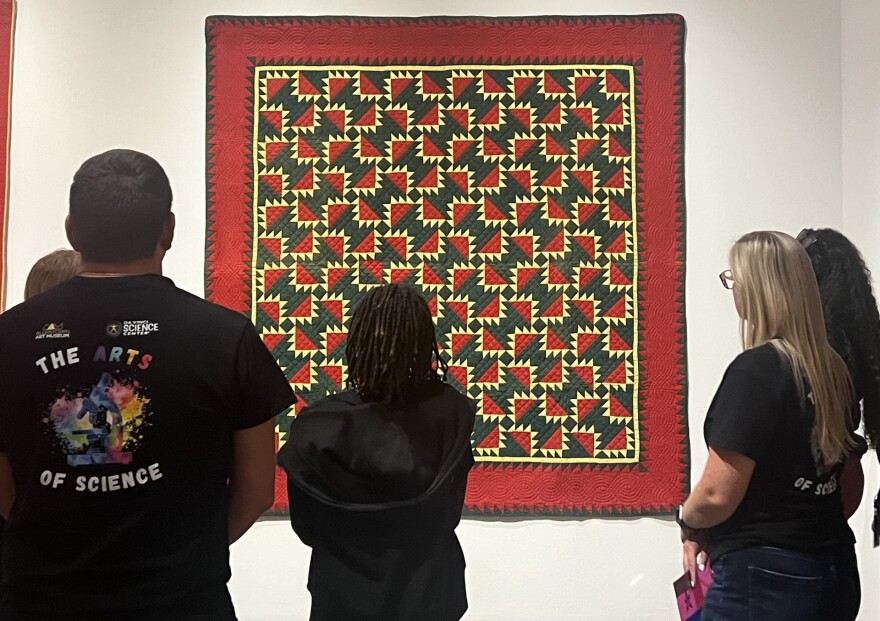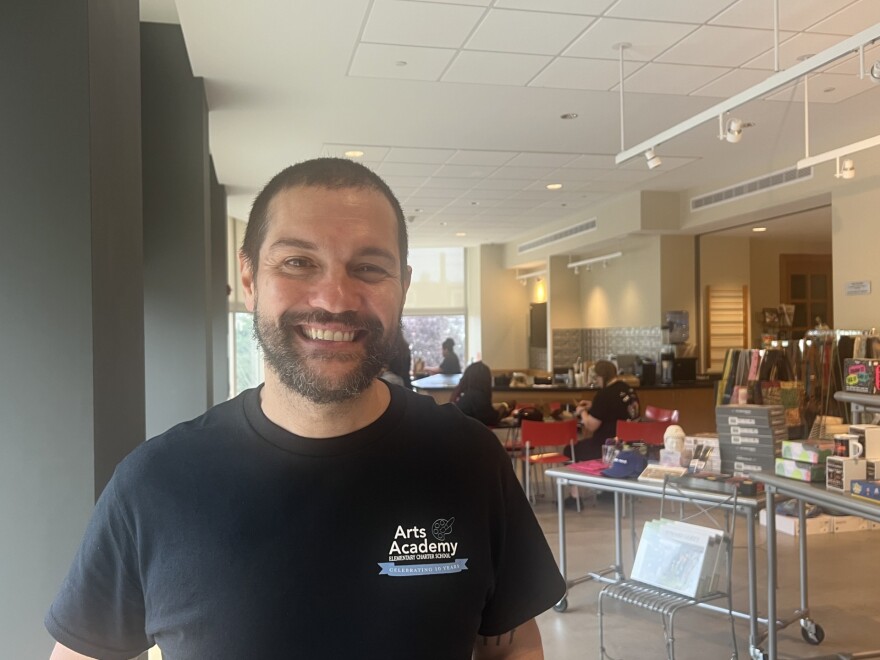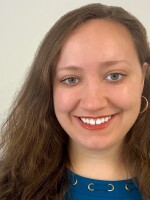ALLENTOWN, Pa. — Instead of sitting through a presentation or taking an online training, Arts Academy Elementary Charter School teachers spent their first professional development days of the school year at Allentown Art Museum and Da Vinci Science Center.
“It’s really fun [and] entertaining,” special education teacher Zamarria Brake said. “It actually makes this first week very enjoyable.
“I like this way better than the traditional PD way.”
The science center and art museum collaborated to offer a conjoined professional development experience for Arts Academy teachers on Tuesday and Wednesday.
The Arts Academy, at 601 Union St., integrates the arts into its core academic subjects.
The professional development initiative, called “The Arts of Science,” exposed charter school's teachers to hands-on learning activities they can use to teach students the state's new science standards.
The professional development experience also came as the Arts Academy is renewing its commitment to interdisciplinary learning. The school is opening a STEAM lab this academic year.
STEAM stands for science, technology, engineering, arts and math.
New science standards
The Pennsylvania Science, Technology, Engineering, Environmental Literacy and Sustainability standards shift students away from memorization and toward participation in scientific discourse and practices.
“It’s not just new content standards, it really is a shift in the way science is taught."Ann Bebout, assistant director of STEAM education at the Da Vinci Science Center
The STEELS standards must be implemented across the state this school year. They are the Pennsylvania version of the national Next Generation Science Standards, but with a greater focus on environmental education.
“It’s not just new content standards, it really is a shift in the way science is taught,” said Ann Bebout, Da Vinci Science Center's assistant director of STEAM education.
There’s a heavy emphasis on using discussion to guide students toward understanding concepts on their own and learning to think like a scientist.
That’s different from traditional science teaching, which relies on memorization of vocabulary and conducting experiments that simply confirm information the teacher already shared with students, Bebout said.
‘Not the way most teachers were taught’
At their DaVinci professional development day, Arts Academy teachers investigated the phenomenon of a singer using their voice to break glass.
They used that as a case study for learning how to teach science concepts with the new STEELS approach.
“Instead of doing the old-fashioned scientific method, this has [students] thinking more and trying to come up with why something happened.”Susan Marth, a second-grade teacher at Arts Academy Elementary Charter School
The educators made hypotheses, read about how vocal cords work and participated in hands-on activities, such as playing with tuning forks — metal devices used by musicians to tune their instruments.
Through those experiences, the teachers learned that a singer’s vocal cords vibrate when they sing, causing air to vibrate as a result, which in turn causes the glass to vibrate and break when its strength has been exceeded.
“This is not the way most teachers were taught science themselves,” Bebout said.
“That’s why the recommendation is to have an immersive adult learner experience and engage with science themselves.”
Susan Marth, a second-grade teacher at the Arts Academy, said she got some ideas from the Da Vinci professional development day to use in her classroom as she implements the new STEELS standards.
“Instead of doing the old-fashioned scientific method, this has [students] thinking more and trying to come up with why something happened,” she said.

Da Vinci Science Center provided the Arts Academy with the professional development day through its Connect Membership Program, which provides schools and districts with options for discounts on staff training, field trips, events and more.
Additionally, Da Vinci has an exclusive educational partnership with Allentown School District’s Central Elementary STREAM Academy, which launched last school year.
‘The arts has this wonderful way’
During their professional development day at the Allentown Art Museum, teachers learned how to integrate the arts into science learning with a focus on the STEELS standards.
The art museum has held professional development for Arts Academy staff members for the past three years. Previous years focused on arts integration in other subjects, such as history.
“We’re doing this because it's better for our teachers, our students to see the world, experience the world.”Daniel Djuro-Goiricelaya, director of arts integration at Arts Academy Elementary Charter School
“The arts has this wonderful way of being able to dissect and process all of these other topics,” said Abby Simmons, the museum's director of education and public engagement.
Just as historians do, artists conduct research, Simmons said. And like scientists, they grapple with questions and experiment with materials.
At the art museum, teachers learned how to explore STEAM concepts, such as light, symmetry and gravity, through analyzing artwork and creating art themselves.
In the past, the art museum has collaborated with the Arts Academy on a visual thinking strategies curriculum for students to use for exploring artworks.
The curriculum uses similar strategies to those of the new STEELS standards, such as group discussion and developing questions about the content.
Daniel Djuro-Goiricelaya, director of arts integration at the Arts Academy, spearheaded the development of the curriculum.
It teaches students to note what they see in an exhibit, explain it and notice additional details about the art.

“We’re using art to teach them how to respect everybody’s opinion,” he said.
It also teaches them to “incorporate other people’s ideas into their own narrative,” “work as a team,” and “learn that sometimes you’re going to have a different opinion” from others.
Arts Academy students go to the art museum annually to put those skills to the test.
Djuro-Goiricelaya said field trips are beneficial for both students and teachers.
Visiting the museum or the science center can make a concept more impactful and more likely to stick.
“We’re doing this because it's better for our teachers, our students to see the world, experience the world,” he said.


